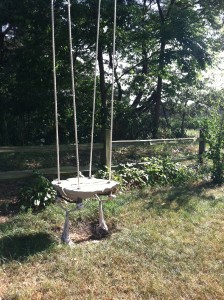“We don’t see things as they are. We see things as we are.” – Anais Nin
Many of us are attached to the idea that the reality we see is objective. But objectivity is difficult to come by. Our prior experiences, preconceptions, projections, and (often faulty) beliefs alter what we see.
Think of a funhouse mirror. Get the picture?
Now, this isn’t necessarily a problem unless we fail to realize it. In other words, if we become so invested in what we see in the mirror that we believe it’s real.
One of my favorite teachers, Swami Bodhananda, says that if we look in the mirror and see a fractured image we are only “lost” if we believe that we are actually fractured or distorted. It’s only the image that’s distorted. And the image isn’t who we are.
To take this a step further, consider, Who (or what) are we? Are we merely a collection of our thoughts and experiences? Are we our emotions? Our words and deeds? If identity is a construct, from what elements do we build it? And if we dismantle it, what do we have left?







